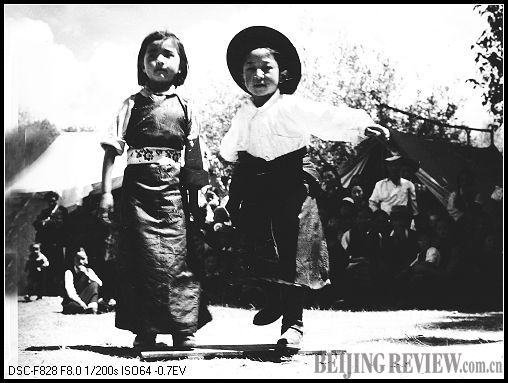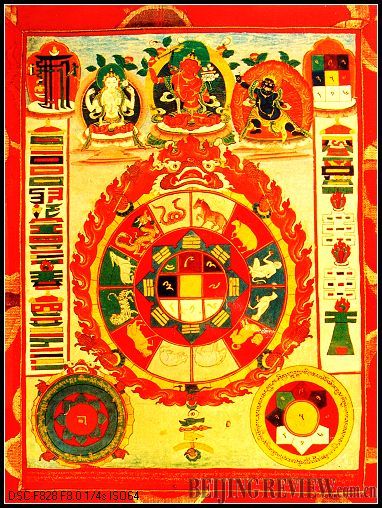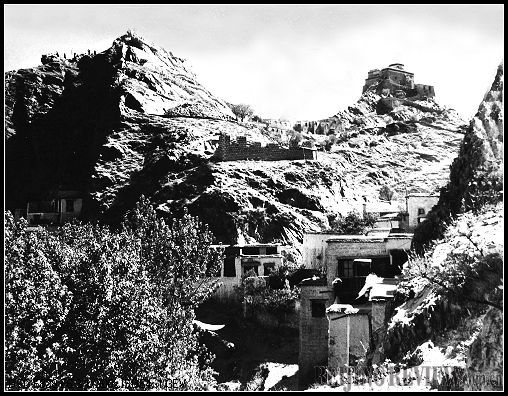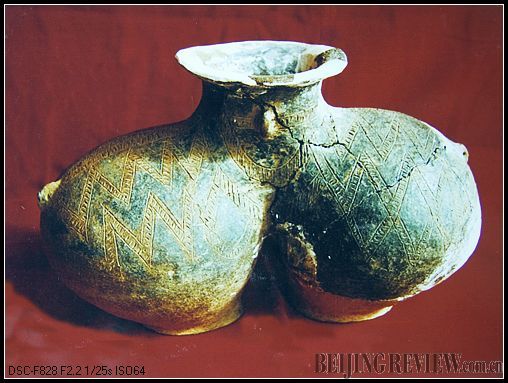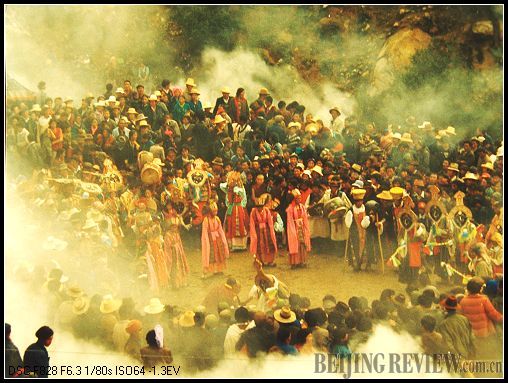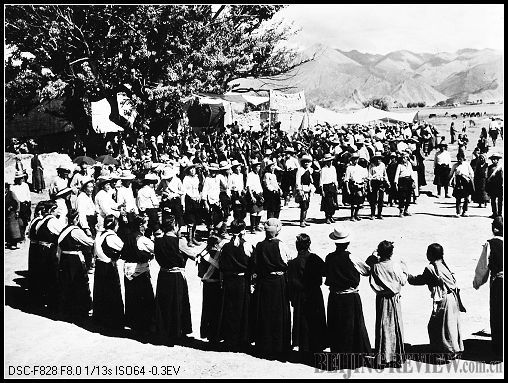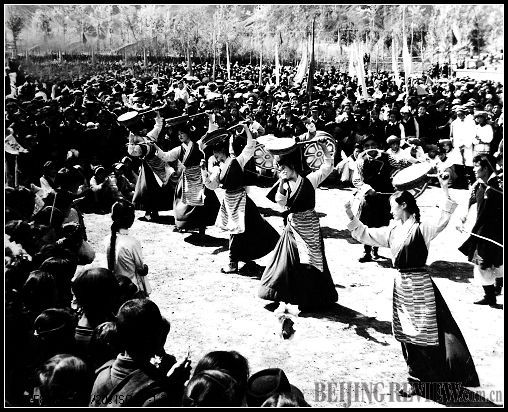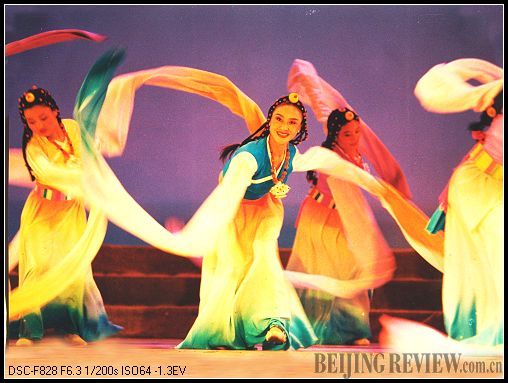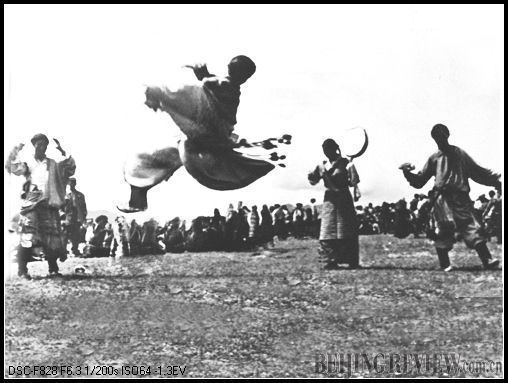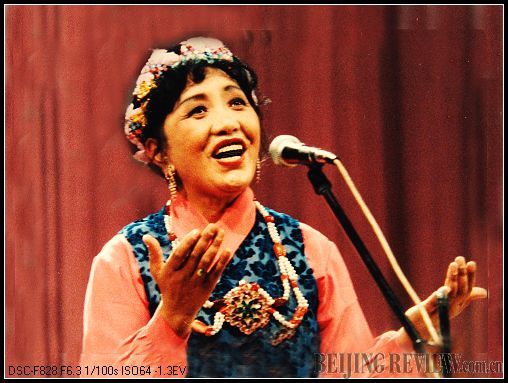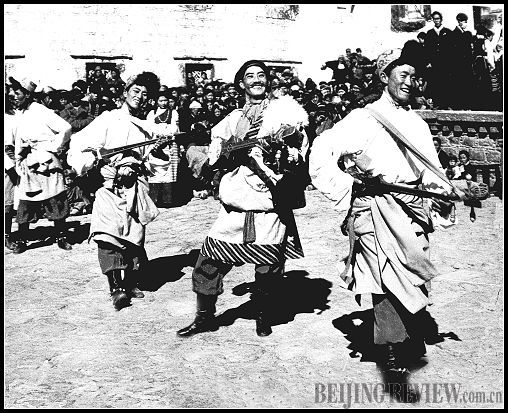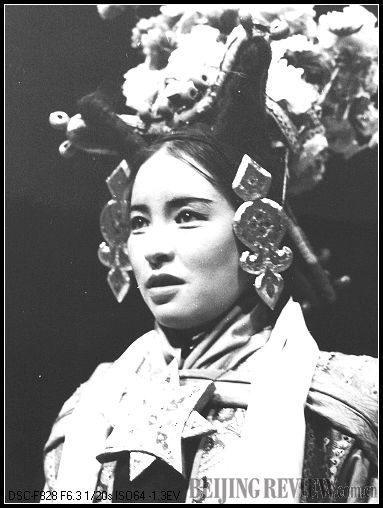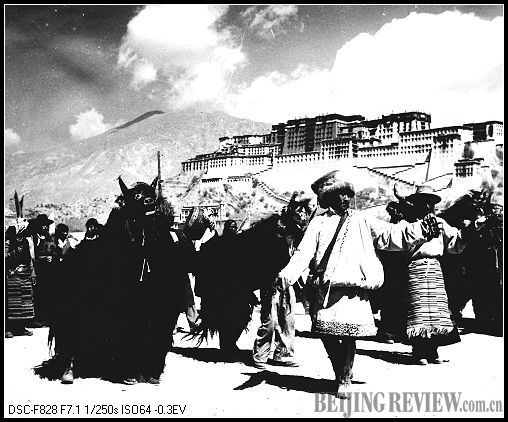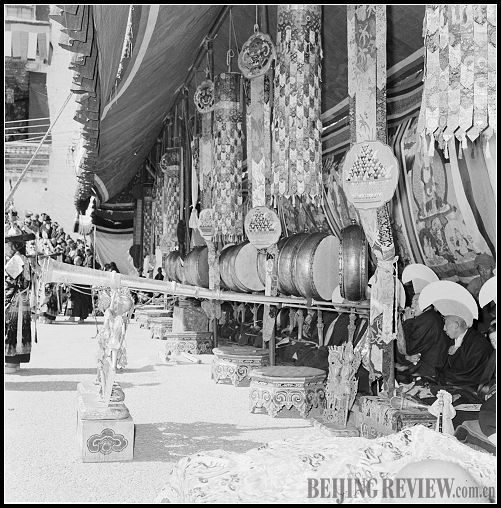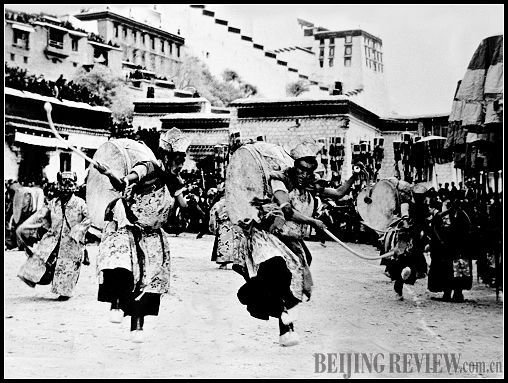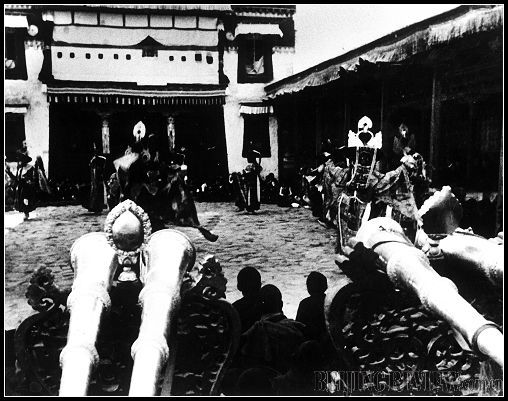Tap Dance
Tibetan children performing the tap dance (1956)
Twelve Zodiac Signs
A Tangka with figures of the Twelve Zodiac signs (1978)
Moinchekang
On the top of Yaowang Mountain opposite the Potala Mountain is erected the "Medicine for All Monastery" (Bureau of Tibetan Traditional Medicine, Astronomy and Calendar), called Moinchekang in Tibetan. Under the order of the 5th Dalai Lama, Qoipa Chinro Norbu founded another Moinchekang near the western door of Jokhang Monastery in Lhasa in the 17th century. It is an institution combining Tibetan medicine, medical treatment, astronomy and calendar study and teaching. In the late 19th century, Moinchekang actually became a school also providing outpatient services and cultivating Tibetan medicine and astronomy talents (1956)
Pottery
Cultural relics unearthed at the Kano Site in Qamdo: Two-bodied, color-glazed pottery pot (1979)
Shoton Festival
The traditional Shoton (Sour Milk Drinking) Festival falls on the first day of the seventh Tibetan month, lasting two or three days. During the festival, almost all the residents in Lhasa go to the Zhaibung Monastery with sour milk, milk products, butter tea, highland barley wine and delicious delicacies to appreciate the huge portrait of Buddha and enjoy the performance of Tibetan plays. The professional or amateur Tibetan play troupes from various places also go to the monastery to give performance. In the picture, the audience were watching the traditional Tibetan play Prince Norsang (1987)
Duixie Dance
Peasants in the western suburb of Lhasa performing Duixie (collective ring dance) (1959)
Tambourine Dance
Tambourine dance (1959)
Cho Dance
Cho, a general term for dance in Tibetan, is a self-entertainment collective activity that men and women, holding hands in an arc, perform while singing in antiphonal style. The number of participants may reach two or three hundred. The lyrics have extensive content. Some carry forward the religion, some sing of their hometown, some express love, and some teach people to respect elders. A tune, especially for a dance, is at first slow and then fast, and ends with the adagiettos. Generally, the dance is in harmony with the rhythm of the song sung, without the accompaniment of musical instruments. The adagiettos of the Cho mainly consists of singing in the pastoral area, while the allegretto part has a fast rhythm associated with tucking and jumping movements (1995)
Repa Dance
Repa dance on the grassland (1960)
Cedai Zholma
Cedai Zholma, a well-known Tibetan singer (1987)
Performance
Artists performing on Barkor Street in Lhasa (1959)
Nangsa Girl
The heroine of the traditional Tibetan Opera Nangsa Girl (1978)
Yak Dance
The Tibetan Yak Dance (1959)
Monk Band
The monk band in the Sera Monastery (1958)
Folk Dance
The dancers' movements and postures are bold, unconstrained and easy (1957). Tibetan folk dance has preserved alongside with the development of Tibetan religious culture. When religious rituals are held, these dances are often performed with high art. For example, during the Grand Summons Ceremony in Lhasa, monks from some monasteries perform for leading figures, monks and laymen. Picture shows the monks from the Gonggar Monastery in Shannan Prefectures performing a big drum dance. Dancers jump around while using an arc-shaped drumstick to beat a big drum on their back
Changmo Dance
Changmo (Shikkongo Shin Dance) performed in the Tashilhungpo Monastery
